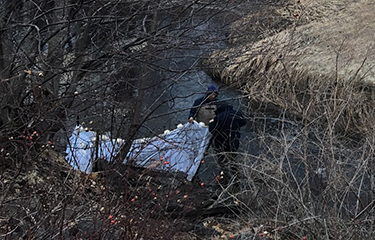Maine’s elver fishery got its start on 22 March, and at two weeks in, the average price-per-pound is sitting well above historical averages.
Maine’s elver fishery made headlines last year as the prices being paid for the baby eels hit historic highs, with some reporting getting prices of over USD 2,500 (EUR 2,225) per pound. Maine Department of Marine Resources landing statistics show that the fishery brought in USD 21.7 million (EUR 19.3 million) in 2018, with an average seasonal price of USD 2,366 (EUR 2,105) per pound, making it the second-most valuable fishery in the state behind lobster.
This year, the numbers are tracking significantly lower than the same period in 2018. In 2018, by 1 April, the fishery had already generated USD 1.4 million (EUR 1.25 million) in value, with a catch of 559 pounds. However, on 3 April of this year, the value has been reported at half of what it was in 2018, at USD 755,869 (EUR 672,844) and the total harvest sits at just over 460 pounds.
Despite the smaller numbers, 2019 is still well above average compared to years past, Maine Department of Marine Resources Director of Communications Jeff Nichols told SeafoodSource. Average price-per-pound in 2010, for example, was just USD 185 (EUR 164.68).
“At over USD 1,600 [EUR 1,424] a pound, the value is still significant relevant to the historic norm,” he said.
The high value of the small eels made them an attractive target for poachers in 2018. Poaching issues led to the premature shutdown of the fishery in late May, after a marine patrol investigation discovered illegal catches of the small eels likely would have put the state over its quota of just 9,688 pounds.
Quotas on the fishery were first put in place in 2014, after the value of the eels began to skyrocket and increasingly high landings started to put pressure on the species. Once a small, niche fishery, elver’s value in Maine exploded after multiple years of poor Japonica eel harvests in Japan – coupled with a European Union-wide ban on all elver exports – left limited supplies of the small “glass eels.”
Aquaculture facilities in Asia rely on the tiny eels for seed stock. The limited supply of needed seed stock lead to a low-supply, high-demand situation around 2013, inflating prices to heights Maine had never seen before. News reports at the time likened the suddenly valuable, relatively unregulated fishery to the “Wild West” as fishermen and buyers carried firearms to protect their harvest and the large amounts of money that came with it.
The fishery is a much different place now, as state regulators immediately got to work applying a quota and creating chain-of-custody efforts – including an electronic swipe-card system that tracks the details of every transaction.
According to Nichols, yet more measures have been put in place this year to ensure that poachers won’t have an avenue to sell their catch.
“That was a rule change that we implemented recently, to require folks who hold an elver exporters license to notify marine patrol 48 hours before preparing elvers for exportation out of the state,” Nichols said. “Then the marine patrol needs to be present as they’re preparing the package of elvers for shipment, and marine patrol will witness the weighing and packing of those elvers, and then the officer who is conducting the witnessing process will seal the shipment of elvers with a tamper-proof seal.”
The investigations and the seal are intended to make sure no ill-gotten elvers make their way into shipments.
“The department is doing what we can to minimize and eliminate opportunities for illegally harvested elvers to be bought and sold,” Nichols said.
The season for elvers runs through 7 June, but will end early if the quota is reached.







